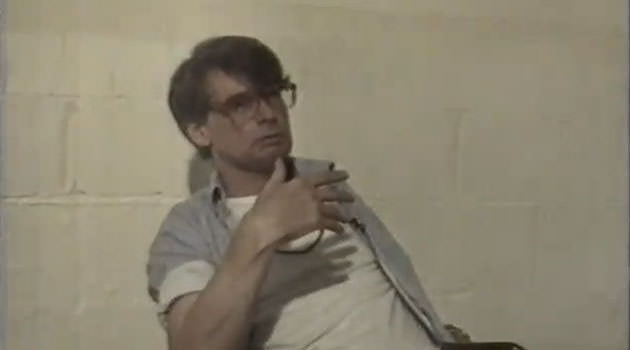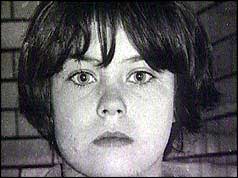 In 1949, Colombia was a very violent place. It was certainly not the place to be born, but unfortunately it was the year Pedro Alonzo Lopez was born in Tolmia amidst riots and unspeakable violence that had started just a year ago when, in the wake of the assassination of a popular politician, Jorge Eliecer Gaitan, a civil war had started. The war was to continue for as long as a decade and was to claim over 200,000 lives.
In 1949, Colombia was a very violent place. It was certainly not the place to be born, but unfortunately it was the year Pedro Alonzo Lopez was born in Tolmia amidst riots and unspeakable violence that had started just a year ago when, in the wake of the assassination of a popular politician, Jorge Eliecer Gaitan, a civil war had started. The war was to continue for as long as a decade and was to claim over 200,000 lives.
Luck was the last thing on Lopez’s side right from the birth. He was born to a destitute prostitute and was the seventh of her 13 children. His mother was not the polite kind and controlled her children with an iron hand. The crime rate in the country was 50 times higher than that in any other country of the world. So, it was hell inside and the same outside for Lopez. And then in 1957, when he was just 8, he was caught by his mother engaging in sexual activity with his younger sister. That was the day she threw him out of the house and told him never to come back.
He had no place to go and nothing to eat when an older man offered him food and shelter. Things started looking up for Lopez until the man, instead of giving him food and taking him to a house, took him to an abandoned building, sodomized him several times and threw him back on the street.
Now, Pedro Lopez was very scared of the strangers. He would sleep in the alleys and abandoned buildings and venture out in the dark to look for food in garbage bins. It took a year for him to gather the courage to move about. He moved and came to Bogotá. He scavenged the garbage and begged for food. An American couple found the sight heartbreaking. They got him a warm meal and asked him to live with them. He got a nice room, was given meals, and was enrolled at a school for orphans. But luck wasn’t on his side. It had never been. In 1963, when he was 12, one of the male teachers sexually molested him at the school and the memories of previous abuse with the associated anger came flooding back. He stole some money from the school office and ran away.
He was back in the streets of Colombia. Though the civil war had come to an end and the government was reorganizing factories, Pedro did not have much hole with the jobs because he had no skills and no education. So, he was back to begging and scavenging. In addition to that, he stole to survive. Soon, he started stealing cars and became an expert at that. He was now in his mid teens. But his luck ran out again and at the age of 18 he was arrested in connection with a car theft and was sentenced to 7 years in prison.
He had been behind the bars for barely two days when he was mercilessly gang-raped by four older inmates. And that was it for Pedro. He was furious and swore to himself that never again was anyone going to lay a finger on him. He made a crude knife from the jail utensils and within the next two weeks all four of his tormentors were dead. The murders were considered self defence and two years were added to his sentence.
The time he spent in prison together with the hardships and abuse he suffered had done irreparable damage to Pedro’s mind. He was fearful of women because of the way he was treated by his own mother. So, he resorted to pornographic books and magazines to satiate his sexual desires.
When he was released from prison in 1978, he travelled throughout Peru. There a group of Ayacuchos captured him in northern Peru when he was caught attempting to kidnap a 9- year-old girl. The Indians stripped Pedro and tortured him before they decided to bury him alive. But this time luck was on Pedro’s side and an American missionary succeeded in persuading Pedro’s captors to hand him over to the authorities. Peruvian authorities deported Pedro to Ecuador.
In Ecuador, Pedro took to travelling extensively. And the authorities noticed a steep rise in the number of missing persons. But they attributed it to the South American sex slave rings that thrived during those times. However, in April 1980, when a flash flood near Ambato, Ecuador, brought the remains of four missing children ashore, the authorities were forced to have a second look at the cases of missing persons.
A few days after the flood a local resident by the name Carvina Poveda was shopping at the market when Pedro tried to abduct her 12-year-old daughter, Marie. The attempt was foiled by the local merchants and Pedro was handed over to the police. When he was arrested he was rambling incoherently. The police thought they had a nut case in custody.
Pedro was in no mood to cooperate with the authorities and refused to answer any questions. Then the police decided to use another method. They dressed a local priest, Father Cordoba Gudino, in the prison garb and put him in Pedro’s cell. The plan was to have the priest win the confidence of Pedro and make him talk. It worked. But when Pedro started talking, the priest could not bring himself to sit through it. He asked the authorities to let him out. After talking to priest and having come to know all that Pedro had told the priest, the authorities confronted Pedro. He confessed to killing at least 100 girls in Colombia, 110 girls in Ecuador, and “many more than 100” in Peru. Now, that was an incredible number.
As to the cause for killing, he explained, “I lost my innocence at age eight. So I decided to do the same to as many young girls as I could.”
Pedro told that he selected his victims on the basis of a ‘certain look of innocence’. He would look for his victims on broad day light. He would abduct the victim, rape her and then strangle her looking into her eyes. He said that he felt immense pleasure and sexual excitement as he saw his victim’s life fade away before him.
It was difficult to believe Pedro’s claims. When Pedro realized that the police did not believe him, he offered to take them to the burial spots where he had dumped the bodies of his victims. The police agreed.
The doubts that they held initially soon started to fade away as Pedro led the investigators to deserted area near Ambato. The remains of as many as 53 girls were found here. Pedro led them to 28 other sites, but no more bodies were recovered. The investigators concluded that in all likelihood the animals scattered the body parts and the floods washed away the rest.
Pedro was charged with 57 counts of murder and was sent on trial. The trial was brief and Pedro was convicted and sentenced to a life in prison in the late 1980s.
Pedro Lopez gave an exclusive interview in January 1999 to Ron Laytner of National Examiner. On how he chose his victims he said, “I went after my victims by walking among the markets searching for a girl with a certain look on her face – a look of innocence and beauty. She would be a good girl, working with her mother. I followed them sometimes for two or three days, waiting for when she was left alone. I would give her a trinket like a hand mirror, then take her to the edge of town where I would promise a trinket for her mother.”
He also disclosed that he would take his victim to a hideaway, which is where he had graves prepared for them. Sometimes these graves held the bodies of his earlier victims.
“I cuddled them and then raped them at sunrise. At the first sign of light I would get excited. I forced the girl into sex and put my hands around her throat. When the sun rose I would strangle her. It was only good if I could see her eyes, it would have been wasted in the dark I had to watch them by daylight. There is a divine moment when I have my hands around a young girl’s throat. I look into her eyes and see a certain light, a spark, suddenly go out.”
Pedro Lopez, like most other serial killers, neither had remorse, nor did he understand the enormity of his crime. To his mind his mother was to be blamed for all that went wrong with his life. The sexual abuse he suffered as a child over and over again left an indelible scar on his psyche. The deep seated anger in him grew by the day and he turned into a monster. He felt that he was simply paying back what was heaped on him all his life. Suffering for suffering, cruelty for cruelty.
Originally published as part of ‘Crime File’ in LAWYERS UPDATE in June 2010.






